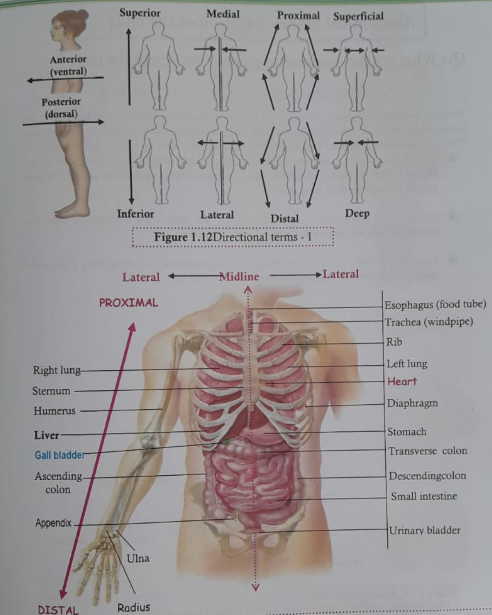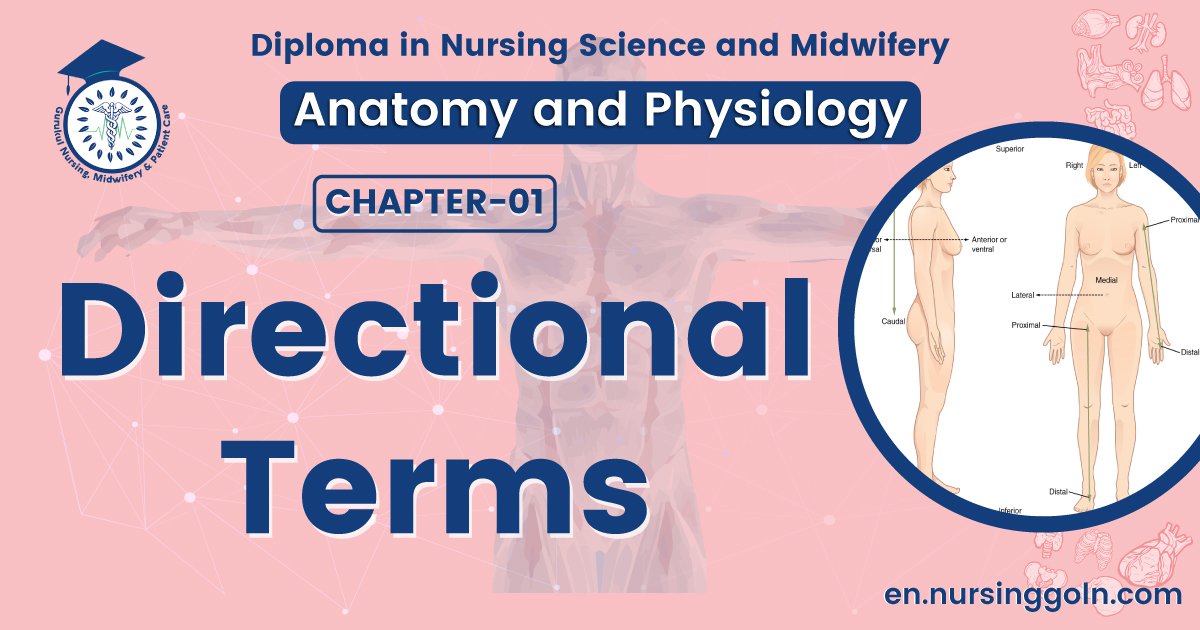Directional terms-The course is designed for the basic understanding of anatomical structures and physiological functions of human body, musculoskeletal system, digestive system, respiratory system; cardiovascular system; urinary system, endocrine system, reproductive system, nervous system, hematologic system, sensory organs, integumentary system, and immune system. The aim of the course is to acquire knowledge and skills regarding anatomy and physiology.
Directional terms

Directional terms when discussed in relation to anatomy can be quite different from the “up,” “down.” “left” “nght,” “above,” and “below,” that most people are used to using in their day-to-day lives These terms, although they may seem a little confusing to begin with, are very specific and help dearly communicate directional information when discussing anatomy.
These are paired terms that have opposite meaning, used to describe the human body in relation to one another. Here are some of the most common directional terms used when referring to anatomy; (See the figure # 1.12, 1.13)
The paired meaning of Directional terms
Dorsal
When something is said to be dorsal, it means that it is closer to the back side of the body For example, the brain is dorsal to the eyes.
Ventral
When something is said to be ventral, it means that it is closer to the front side of the body. For example, the eyes are ventral to the brain.
Superior
When something is said to be superior, it means that it is above. When something is superior, it is closer to the head than the feet. For example, the cranium is superior to the clavicle.
Inferior
When something is said to be inferior, it means that it is below. When something is inferior, it is closer to the feet than the head.For example, the patella is inferior to the pelvis.

Anterior
When something is said to be anterior, it means that it is toward the ventral, or front side. For example, the trachea is anterior to the esophagus.
Posterior
When something is said to be posterior, it means that it is toward the dorsal, or back side For example, the esophagus is posterior to the trachea.
Medial
When something is said to be medial, it means that it is closer to the mid-line. The midline is an imaginary vertical line that divides the body into equal right and left side For example, the heart is medial to the lungs.
Lateral
When something is said to be lateral, is means it is further away from the mid-line For example, the lunes are lateral to the heart.
Proximal
When something is said to be proximal, it means that it is closer to point or origin, or point of attachment. For example, the elbow is proximal to the wrist.
Distal
When something is said to be distal, it means that it is further away from the point of origin, or point of attachment. For example, the toenails are at the distal ends of the toes.
Superficial
When something is said to be superficial, it means that it is closer to the surface. For example, the skin is superficial to the bones.

Deep
When something is said to be deep, it means that it is further from the surface. For example, the bones are deep to the skin.
(Reference:- Saladin. “Major Themes of Anatomy and Physiology. Anatomy & Physiology: The Unity of Form & Function. 4th ed. New York: Mcgraw Hill, 2007.)
Read more:
